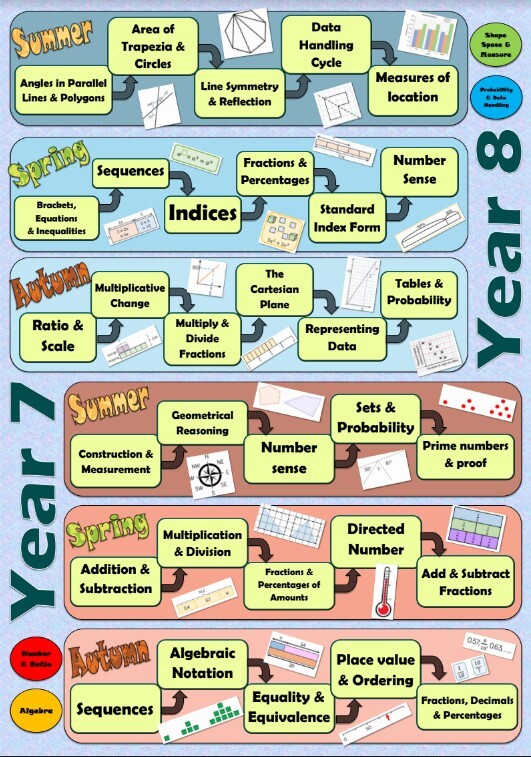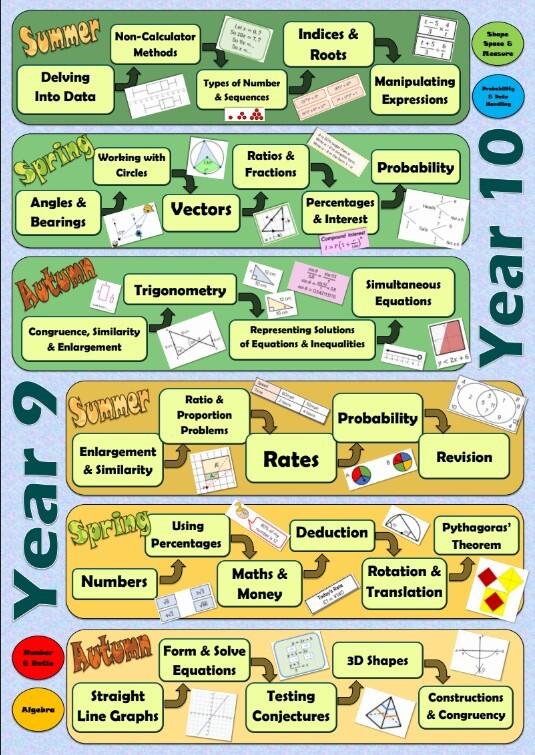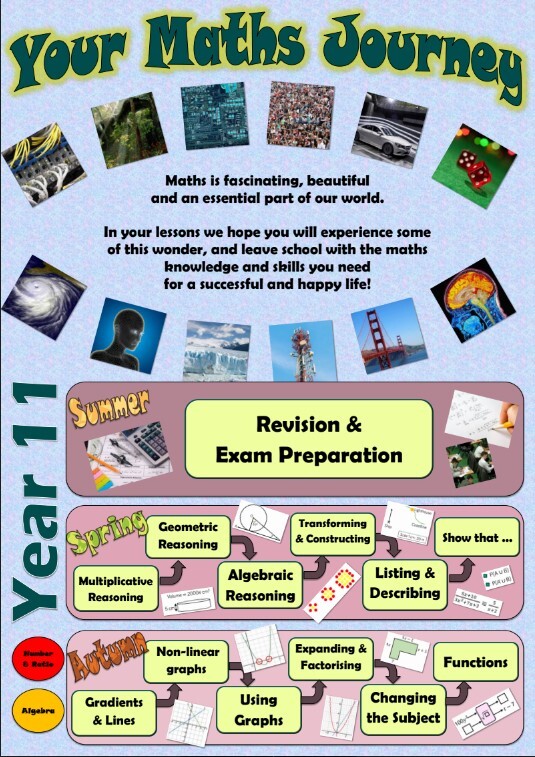Maths



Vision:
Our vision for maths lessons is displayed in all maths classrooms:
“Maths is fascinating, beautiful and an essential part of our world.
In your lessons we hope you will experience some of this wonder, and leave school with the maths knowledge and skills you need for a successful and happy life!”
In Maths, we aim to:
- Offer a curriculum that shows how fundamental mathematical understanding is for life in the modern world
- Teach the curriculum so that students develop a deep understanding of the connections, patterns, structures and inherent beauty in maths.
- Offer a curriculum where the work is pitched at the right level for students so they enjoy success at the subject and leave school with a positive view of their capabilities.
- Thoroughly prepare students for the public examinations they need to pass in order to have the right opportunities available to them in their lives.
- Prepares students for study or careers in areas requiring higher level maths skills.
- Encourage students to become resilient learners and to understand that understanding why they have made a mistake is fundamental to the process of learning.
Yearly Intent Statements
Students in Years 7 to 10 are studying the White Rose scheme of work, which can be seen on the White Rose website.
Year 7: By the end of the year…
Students will have been introduced to algebraic notation. They will have explored the geometry of lines and angles. Their study of number will have looked at applications of the four processes, and how to reason and conjecture about number properties. They will have been introduced to ideas of proportion, and fractional thinking, as well as using directed numbers.
Year 8: By the end of the year…
Proportion is explored more deeply, by considering ratios and scales, and multiplicative change. Mathematical representations, in terms of representing data and also graphing on the Cartesian plane will be studied. Analysing data more deeply is studied in the summer term. Geometrical reasoning is developed with looking at angle properties of parallel lines and polygons, as well as mensuration of plane shapes such as circles and trapezia. Algebraic manipulation skills are also developed.
Year 9: By the end of the year…
Algebraic understanding is further developed with the study of straight line graphs and equations. Number work is developed, including studying percentages and real world financial uses more deeply. The understanding of proportion underpins more of the curriculum, manifesting as the study of enlargements, of rates of change, of probability, as well as specific ratio and proportion problems. In geometry Pythagoras’ Theorem is introduced, as well as 3D shapes, constructions and transformations.
Year 10 - by the end of the year
Students will have met trigonometry of right angled triangles. Higher tier students will study trigonometry of any triangle. The algebra strand is developed - all students will learn about simultaneous equations, and Higher tier students will meet algebraic fractions. Number work continues with more work on percentages, interest, ratios and fractions. The shape and space work continues with areas and volumes of circles, and circular shapes in 2D and 3D.
Year 11 - by the end of the year
Students will complete the GCSE course at either Foundation or Higher tier. This will involve learning about various types of graphs and their properties. There is more algebraic manipulation, and a focus on developing students skills at mathematical reasoning. The year is finished with a thorough revision programme in preparation for the GCSE exams.
The White Rose Scheme of Work can be found here.
Year 12 and 13
The content for A-level Maths is prescribed by government and is therefore the same for all exam boards. We have chosen to teach the AS level content in year 12, giving the option of students sitting this exam if they do not continue to the full A-level.
Students continue their study of algebra and trigonometry that they started earlier. They also meet the new concepts involved in Calculus and Logarithms. One of their teachers will cover the Statistics applied unit, the other the Mechanics applied unit.
Rationale behind sequencing:
For the White Rose scheme, there is a termly plan for each year group. Each term is split into two half terms with a common theme. The half term is split into blocks that ensure students spend enough time to get a deep understanding of the topic being covered.
Interleaving is a key element of the scheme, meaning topics are continually being revisited within new contexts. For example, year 7 starts with developing algebraic thinking and further development of algebraic skills is then woven throughout the year so students reinforce and extend their knowledge and understanding.
We recognise that students enter secondary school with a wide range of prior attainment. The scheme is designed so that any student following the main content will have covered all of the GCSE Foundation tier by the end of year 11 and therefore will have access to a grade 5. Students who have covered additional Higher content will have access to a Grade 9.



